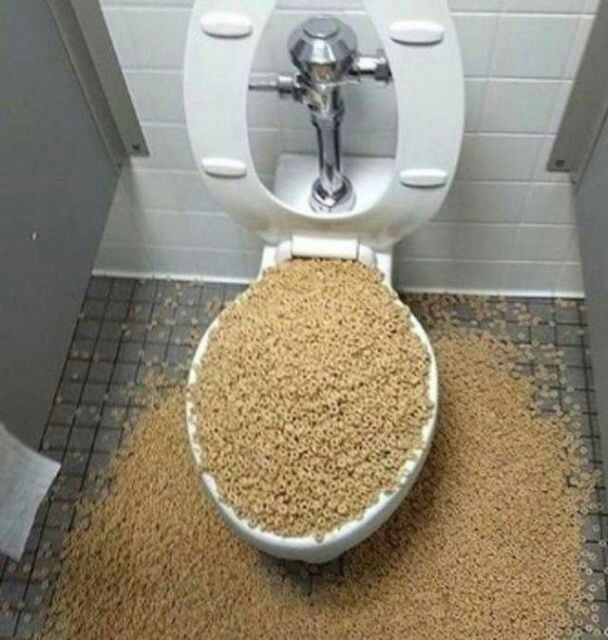Can One to Flush Food Down the Toilet?
Can One to Flush Food Down the Toilet?
Blog Article
Just how do you feel when it comes to Think Twice Before Flushing Food Down Your Toilet?

Intro
Lots of people are usually faced with the problem of what to do with food waste, specifically when it pertains to leftovers or scraps. One common concern that occurs is whether it's fine to flush food down the bathroom. In this write-up, we'll delve into the reasons why people could take into consideration purging food, the consequences of doing so, and different methods for appropriate disposal.
Reasons that people could take into consideration purging food
Lack of understanding
Some people might not be aware of the possible harm triggered by flushing food down the toilet. They might wrongly believe that it's a harmless technique.
Ease
Purging food down the toilet may seem like a fast and very easy solution to disposing of unwanted scraps, particularly when there's no nearby trash can available.
Laziness
In some cases, individuals might simply select to flush food out of sheer laziness, without thinking about the effects of their actions.
Consequences of flushing food down the toilet
Environmental effect
Food waste that ends up in waterways can add to air pollution and harm water environments. In addition, the water used to purge food can strain water resources.
Pipes issues
Purging food can result in clogged pipelines and drains, causing pricey plumbing repair work and troubles.
Types of food that should not be purged
Coarse foods
Foods with fibrous structures such as celery or corn husks can obtain entangled in pipelines and create blockages.
Starchy foods
Starchy foods like pasta and rice can absorb water and swell, bring about obstructions in pipes.
Oils and fats
Greasy foods like bacon or food preparation oils ought to never be purged down the commode as they can solidify and create obstructions.
Correct disposal approaches for food waste
Making use of a waste disposal unit
For homes furnished with waste disposal unit, food scraps can be ground up and purged via the pipes system. Nonetheless, not all foods are suitable for disposal in this way.
Recycling
Particular food product packaging products can be reused, lowering waste and decreasing environmental effect.
Composting
Composting is an environmentally friendly method to deal with food waste. Organic materials can be composted and used to enhance dirt for gardening.
The relevance of correct waste monitoring
Reducing environmental damage
Appropriate waste management methods, such as composting and recycling, help decrease air pollution and protect natural deposits for future generations.
Shielding pipes systems
By avoiding the practice of flushing food down the toilet, house owners can avoid pricey pipes repair work and maintain the honesty of their pipes systems.
Conclusion
To conclude, while it might be appealing to flush food down the toilet for benefit, it is essential to recognize the possible consequences of this activity. By embracing proper waste monitoring methods and dealing with food waste properly, people can contribute to much healthier pipes systems and a cleaner setting for all.
FLUSH FOOD DOWN THE TOILET?
FLUSHING FOOD CAN CAUSE BLOCKED DRAINS IN YOUR HOME
All of the plumbing fixtures in your home are connected to the same sewer pipe outside of your home. This outdoor sewer pipe is responsible for transporting all the wastewater from your home to the Council sewer mains. Even small pieces of food that go down the kitchen sink can cause problems for your sewer. It should therefore be obvious that flushing larger bits of food, such as meat, risks a clog in either the toilet itself or the sewer pipes. Flushing greasy food is even more problematic because oil coagulates when it cools, coating the interior lining of your pipes.
THE TOILET IS NOT A BIN
Food isn’t the only thing that people shouldn’t be flushing down the toilet. People use the toilet to dispose of all kinds of things such as tampons, makeup wipes, dental floss, kitty litter and even underwear. Water goes to great lengths to educate residents about the high costs and stress placed on wastewater treatment systems simply from people flushing the wrong stuff down the toilet. It costs taxpayers millions of dollars each year, and homeowners thousands in blocked drain repairs.
FLUSHING FOOD IS A WASTE OF WATER
Flushing food is a waste of our most precious resource - water. In June this year Level 1 water restrictions were introduced to protect water supply from drought conditions. Much of New South Wales continues to be affected by prolonged drought with recent figures revealing up to 97 per cent of the state remains in drought. Depending on whether you have a single or dual flush toilet, every single flush uses between five and 11 litres of water. In the current climate this is a huge amount of water to be wasting on flushing food that should be placed in the bin (or better yet, the compost).
https://www.jabplumbingsolutions.com.au/blog/can-you-flush-food-down-the-toilet

I'm very interested in What Can Happen If You Flush Food Down the Toilet? and I'm hoping you enjoyed the entire piece. Be sure to take the time to promote this blog entry if you appreciated it. Thank you so much for going through it.
Call Today Report this page